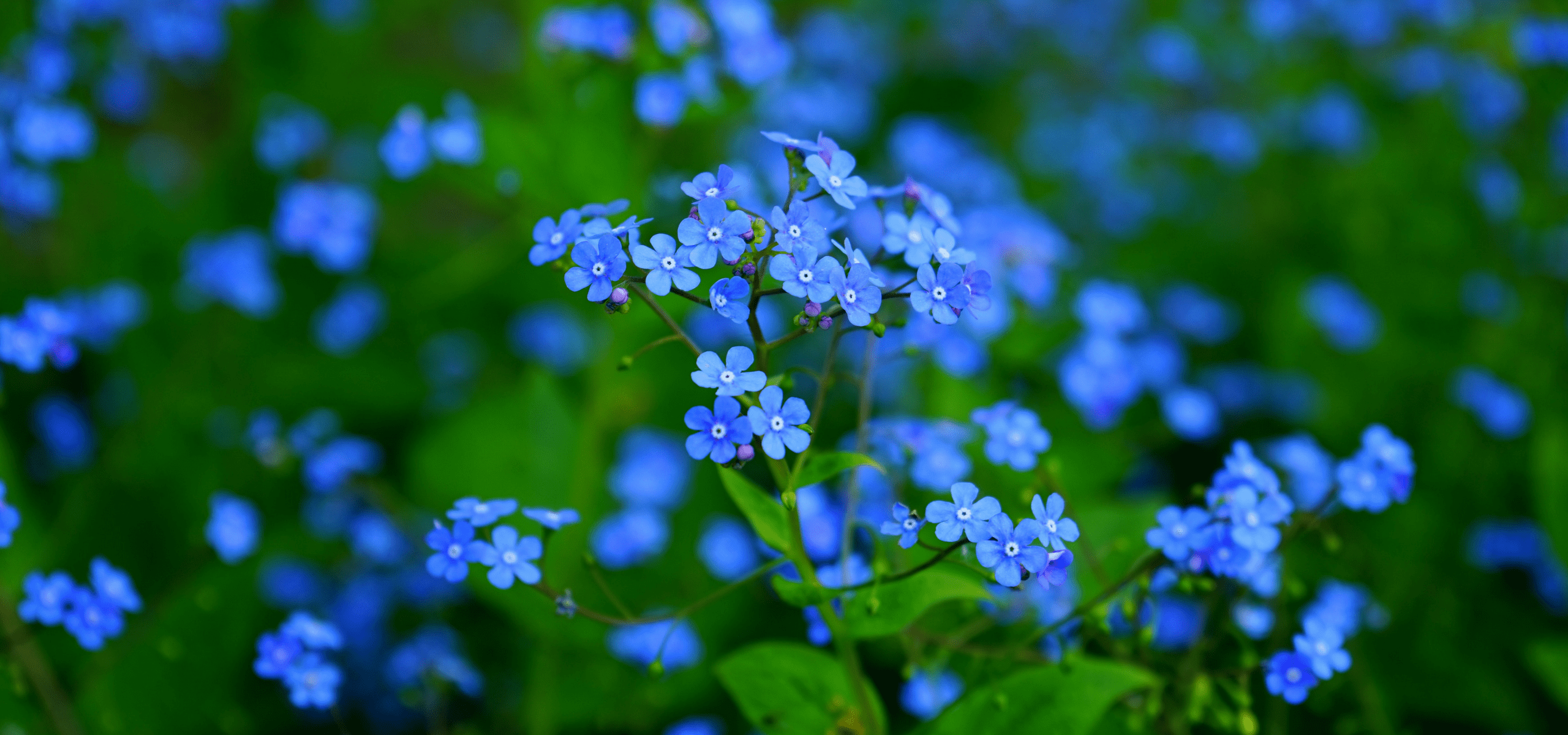
Succeed in planting Brunnera
or Caucasian forget-me-not
Contents
The Caucasian forget-me-not, or Brunnera macrophylla, is a perennial plant native to Eastern Europe that bears small blue flowers, very delicate, resembling those of classic forget-me-nots. The flowers appear in early spring, sometimes as early as March, and last until May – June.
It features a light and airy flowering, which brings a natural and wild touch to the garden. It reaches up to 40-50 cm in height with a spread of about 60 cm. The brunnera offers decorative foliage, sometimes variegated, often silvered, reminiscent of that of hostas. It forms mats and makes a good ground cover. Easy to grow, the brunnera requires little maintenance. It is quite hardy and enjoys shaded situations and cool soils. It is the perfect plant for a wild woodland garden! You can pair it with other shade plants such as ferns and hostas.
Discover all our tips for successfully planting and growing Brunnera in your garden!
Which variety to choose?
The type species, Brunnera macrophylla, captivates with its bright blue flowering that beautifully contrasts with its heart-shaped green leaves. From it, numerous horticultural varieties have been developed, offering a diversity of foliage with varying silver hues, sometimes variegated with cream white. In terms of flowering, most varieties display small sky-blue flowers reminiscent of those of forget-me-nots, but some stand out with white flowers.
Among the most appreciated varieties:
- ‘Jack Frost’ : Its silver foliage, veined with green, creates a striking contrast and brightens shaded undergrowth. It is one of the most popular and robust varieties.
- ‘Looking Glass’ : Even more silver than ‘Jack Frost’, its foliage reveals only a thin green margin and a few discreet veins. Its mirror effect is spectacular, but this variety is slightly less vigorous.
- ‘Dawson’s White’ : Easily recognisable by its large green leaves edged in cream white, it brings a lovely brightness to the garden. However, it is more delicate to cultivate and requires well-drained soil to prevent root rot.
- ‘Betty Bowring’ : A rarity with white flowers that stand out beautifully against its solid green foliage. Ideal for a soft and elegant atmosphere.
- ‘Langtrees’ : Its green foliage punctuated with small silver spots adds an original and subtle touch. A lovely alternative for those seeking a variety with decorative foliage that is more discreet than fully silver varieties.
Finally, also consider Brunnera sibirica, a species closely related to B. macrophylla, which is distinguished by its ability to spread quickly through its rootstock. It forms large dense clumps and makes an excellent ground cover for shaded areas.

Brunneras offer a beautiful diversity of foliage! From left to right, the varieties ‘Jack Frost’, ‘Looking Glass’, and ‘Dawson’s White’.
When to plant the Caucasian forget-me-not?
Brunnera macrophylla is planted in spring, from March to May, or in autumn, in October-November. Spring planting encourages good rooting before summer, while autumn installation allows the roots to develop before winter for vigorous regrowth. In cold regions, a light mulch can protect young plants.
Discover other Brunnera - Siberian Bugloss
View all →Available in 0 sizes
Available in 2 sizes
Available in 1 sizes
Available in 1 sizes
Available in 1 sizes
Available in 1 sizes
Available in 1 sizes
Available in 3 sizes
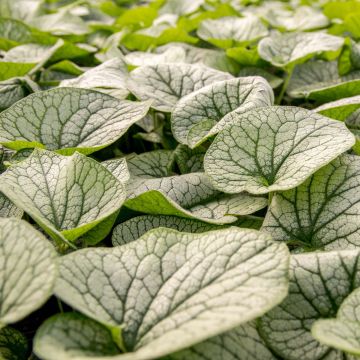
Available in 3 sizes
Available in 2 sizes
Where to plant it?
Brunnera macrophylla is a woodland plant native to the forests of Eastern Europe, where it naturally grows sheltered by trees. It will therefore thrive in a semi-shaded or even fully shaded location, away from direct sunlight that could scorch its foliage, although it can tolerate it if the soil remains cool. Ideal as ground cover, it forms beautiful dense clumps and limits the growth of weeds.
It prefers soil rich in humus, cool and slightly moist, with a rather heavy and clayey texture. It tolerates rich and compact soils well, but fears excess moisture in winter, which can lead to root rot. Conversely, soil that is too dry, poor, or stony would compromise its growth and development.
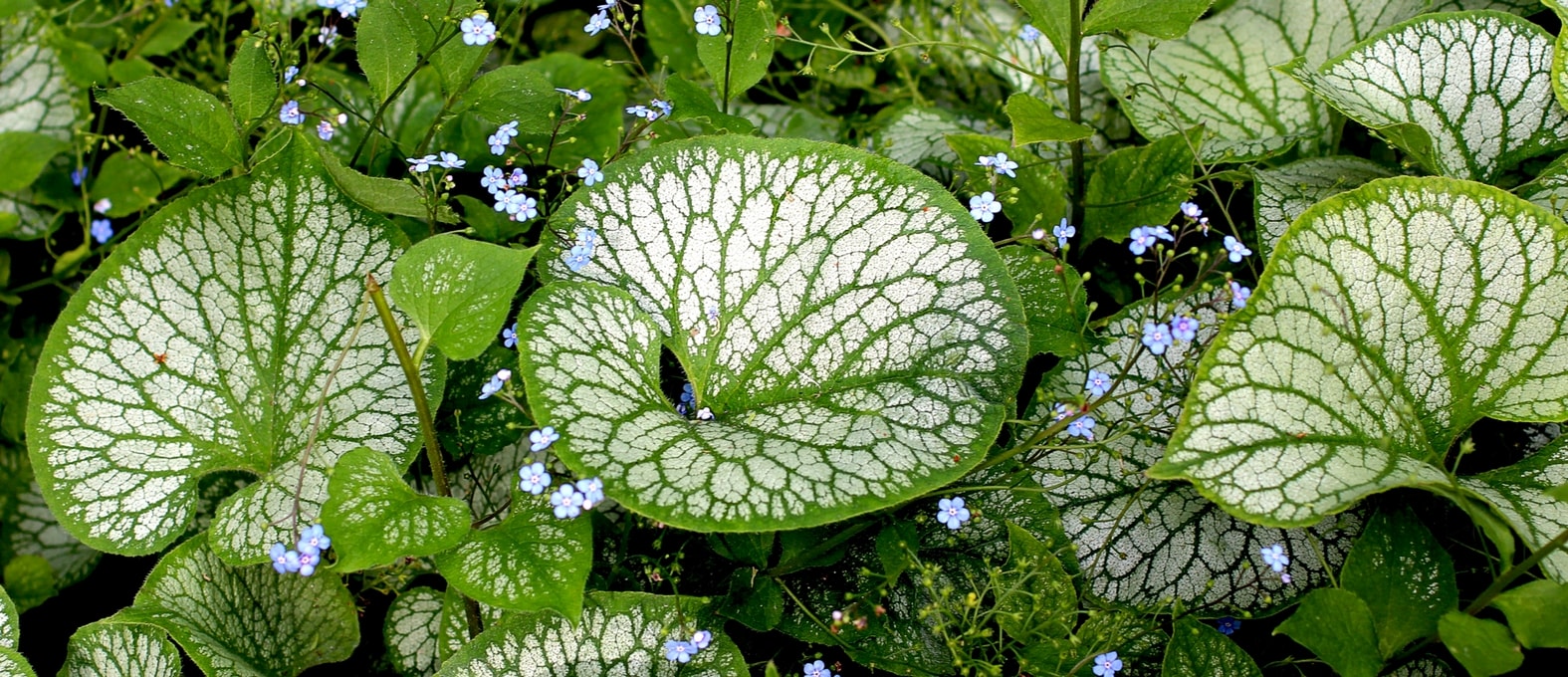
How to plant it?
- Soak the root ball in a basin filled with water
- Dig a planting hole twice the size of the root ball
- We recommend adding organic matter (compost or well-rotted manure), especially if your soil lacks humus. Brunnera thrives in rich soils!
- Position the root ball in the planting hole.
- Fill in by replacing the soil all around, and firm it down.
- Water generously afterwards.
- You can apply a mulch around the clump to keep the soil cool.
Continue to water in the weeks following planting.
How to propagate Caucasian forget-me-not?
Two techniques work well for propagating brunnera: division at the end of winter and propagation by cuttings of roots in autumn. This will allow you to easily have many plants and thus form wide carpets. It is also possible to do some sowing in spring.
You can divide the clumps every three years, around March or in autumn (November). Dig them up, clear the soil around the roots if necessary, then separate them into two or three pieces. Keep only a few leaves to balance the volume of roots and foliage. Replant them immediately. Water.
To make root cuttings, intervene in autumn or winter. Dig up the clumps and take pieces of roots measuring 4 to 5 centimetres. Plant them in a container filled with a mixture of sand and potting soil, which you will place in a sheltered location. Water.
- Subscribe!
- Contents































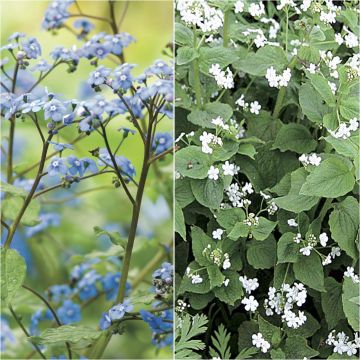
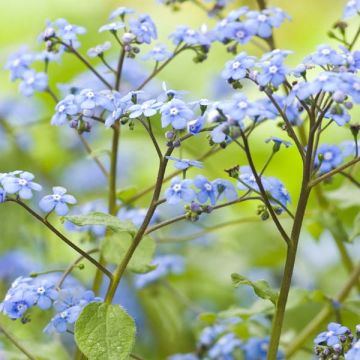
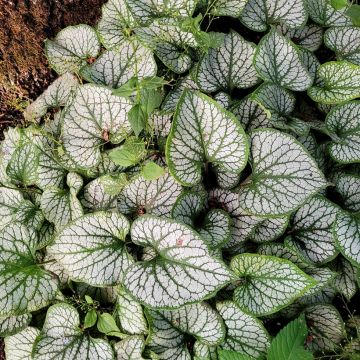

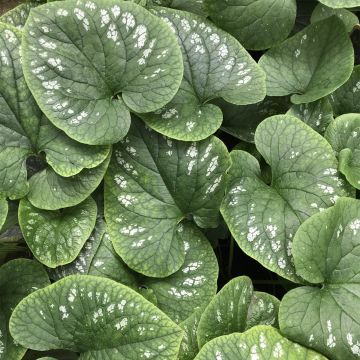
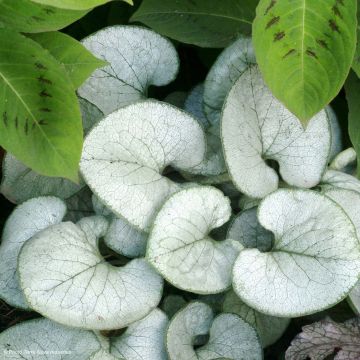
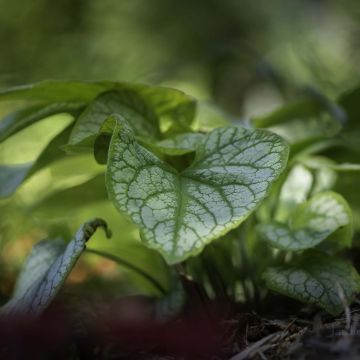
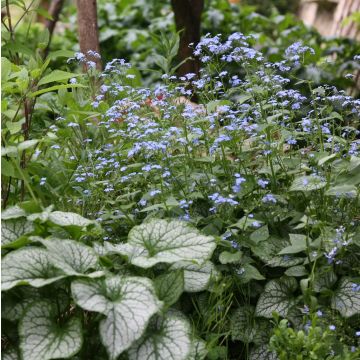

Comments